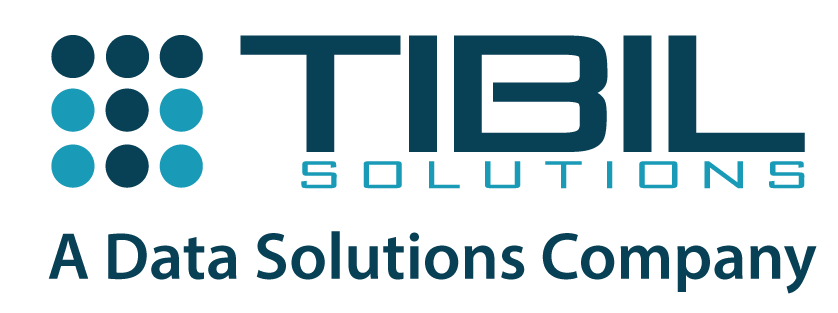
Chatbots and What They Can Do in the Manufacturing Industry
In recent years the development of chatbots and conversational AI has progressed extremely rapidly. What was originally used primarily for B2C customer interactions is today used in an interesting variety of applications.
In the manufacturing industry, a chatbot can serve two functions. Obviously, the first one would be the traditional role of assisting customers or clients to find solutions to their questions and queries. However, more and more manufacturing companies are trying to deploy conversational AI to support employees in getting accurate information regarding production processes to make the whole operation more efficient
Maybe it would be ideal to highlight some use cases in the manufacturing industry and how Conversational AI has been used to improve efficiency and lead to customer delight.
Supplies and inventory check
No manufacturing operation can survive without the regular supplies of spare parts and raw materials. Companies in the manufacturing sector need to keep track of vendor supplies and existing inventory in order to avoid an unnecessary build-up of raw materials and to make sure that orders are fulfilled. Thanks to manufacturing NLP chatbots, employees can access the status of supplies and inventory and any relevant information including supply lead time whenever they need it.
In addition, ERP solutions or other systems can be integrated in order to access information even faster. Businesses can also train the algorithm to analyze how raw materials are used and thereby prevent any wastage. A bonus is that employees can follow up on orders via the same interface.
Manufacturing plants are typically a hub of activity, and factories are spread over several floors or halls. This can result in some confusion and delays especially if employees have to shift between different floors or sites to complete a task. A chatbot can handle floor queries and help avoid unwanted surprises and a waste of time and effort. This is sometimes referred to as knowledge management.
It can also be used to check the distribution of workload on different floors, the production capability at a point in time, and observe what kinds of maintenance issues are recorded. These requests normally take a lot of time to address, but with a chatbot, one would be able to get the information quicker than with standard monitoring systems. These AI-powered assistants also become a crucial part of quality control by providing the manager with in-depth insights about procedures and the amount of attention they need.
Updates and delivery notifications
A manufacturing company has to deal with a lot of supplies and deliveries. With a chatbot, everyone from employees to buyers can be notified on any changes in the status quo and immediately they occur. The chatbot will be able to give information about the status; time and condition of the delivery, saving buyers and the customer support team a lot of time. Overall, intelligent assistants can automate key business processes and ensure that tasks are being handled more efficiently.
Implementing a chatbot for your manufacturing business provides a lot of advantages on multiple levels, including:
Improving operations
The biggest benefit of implementing a chatbot is its availability. In fact, a chatbot is always available at any given hour and any day, unlike a human representative. Moreover, a chatbot can answer an endless number of questions without any ennui or waiting time. This availability makes operations and processes run smoothly while avoiding friction between the major stakeholders, which overall, directly affects the business and improves its performance.
Providing an interactive platform
Chatbots are an effective way of communicating because they do not deliver a passive experience to the user but rather an engaging interactive conversation that helps them in their queries and makes them feel cared for. Chatbots make it possible to increase engagement rates and attract more and more potential customers.
Improving organization efficiency
Intelligent virtual assistants help companies in many ways; one way is improving their overall efficiency and productivity. With a chatbot ready to take over standard and redundant tasks, the company finds itself with more resources both in terms of manpower and finances to tackle the operations that require human intervention.
Additionally, a chatbot can keep track of various metrics by integrating them with existing systems ensuring optimal efficiency and better supply chain management. This results in the firm having the optimal number of manpower and inventory at all points in time.
While the use cases and the benefits are quite obvious, many organizations continue to struggle with incorporating the technology.
IoT as a driver for conversational AI in Manufacturing
The changing technology landscape of IoT is both imminent and rapid. Furthermore, as newer features and use cases are introduced, there is an added responsibility to educate the end-users which can be burdensome for both the users and the developers of the system. Complicated systems cause difficulties in adoption and diffusion. As an assistive technology, chatbots can simplify the learning curve in the following ways:
a) Help Features: IoT-enabled Chatbots can feature help texts which clarify the user request to ensure that the action performed is the same as the one intended.
b) Recommendations: Chatbots can recommend possible actions to the user which can be made more intelligent and context-aware depending on user preferences and the dynamics of the environment.
c) Automation: Chatbots are good at automating common cyclic, tasks and can perform certain actions such as monitoring the availability of sensors (uptime, downtime, etc.) and others.
As more use cases are discovered, chatbots can make the adoption and diffusion of IoT systems significantly easier and reduce the cognitive burden required to understand the functionalities of these systems.
Remedying hardware and software issues in modern consumer IoT systems can be an irksome task. The recourse is to call the service provider for technical support or in many cases returns the product. Either way, it is an unnecessary burden on the user as well as the support vendors in today’s cost structure. Smart Chatbots often have support services built into their functionality. They can even integrate human-in-the-loop systems to handle situations that the Chatbot is not trained or authorized to perform, in real-time. In this manner, users need not go beyond the scope of the chatbot application to look for product support. Any software issue or hardware malfunction can be monitored and Over the Air (OTA) software repairs can be performed. Chatbots can also be used to schedule technical repairs making them a convenient and fast solution for customer support. However, it is imperative that the entire AI system is aligned with the overall business objective. The standardization of processes across an organization and defining business rules is imperative. Moreover, with increasing digitization in enterprises, technology architecture has become a decisive factor for the successful adoption of any digital interface, including chatbots. It does not make sense to first invest in a particular technology platform to build a chatbot and then encounter a not-so-pleasant surprise of not being able to integrate it with existing ERP or other applications.
The key is to understand that chatbot development is a long journey. Enriching a chatbot with features takes time. There is a minor distinction between a conversational chatbot and a transactional chatbot. In most cases, the features may overlap over a period of time after multiple scope enhancements.
For practical implementation purposes, it is simpler to look at chatbots as three types – basic, intermediate, and advanced. Progressing from a basic to an advanced chatbot is a journey spanning a substantial period of time, and involving continuous improvement and incremental enhancements in features.
Chatbots are a powerful mechanism that makes repetitive tasks more efficient and provides analytics and insights into employee references and the organization’s areas of improvement with such obvious advantages, investment in the deployment of chatbots makes eminent sense. Conversational Chatbots have their limitations, but many have already proven their worth. However, despite the strides in technology, it must be stated that it is not the only factor that defines efficient software. As with many new technologies, good experience, design and human behavioral science are crucial to successful design and implementation. However, training of conversational AI will get easier and faster over the years and therefore there is no doubt that it will have a long-life span. The ultimate objective of course would be a flawless experience with a conversational agent.
Related Posts
AI Toolbox: Creative Content Beyond ChatGPT & BARD
Introduction: In the dynamic landscape of artificial intelligence (AI), ChatGPT and BARD have garnered significant attention for their capabilities in natural language processing and music composition. However, a rich tapestry of AI tools exists...
Ethical Considerations in Generative AI: Ensuring Fair and Responsible Data Analytics
Introduction Generative AI, a transformative subset of artificial intelligence, is revolutionizing data analytics and machine learning. It empowers machines to generate data, images, and text that mimic human creativity. While the potential of...
Building a Better Future with Digital Public Goods
The world is on the cusp of digitization! In this era of digitization, we have transformed the way we communicate, interact, and access information. It has not only changed our personal lives but also has brought an evident transformation in the...
The Role of Artificial Intelligence in Cyber Security
In an era characterised by rapid technological advancements and increasing digitalisation, the field of cyber security faces an escalating and ever-evolving threat landscape. As cyber threats become more sophisticated, organisations must employ...
TinyML: The Future of Edge AI
Artificial intelligence (AI) has been a hot topic in recent years and with good reason. AI has the potential to transform countless industries and improve our lives in numerous ways. However, as powerful as AI can be, it also requires a lot of...
The Evolution of Federated Learning
Uber settled an inquiry into a data breach that exposed the personal data of more than 5,00,000 drivers in 2016 by paying $148 million. A GDPR breach resulted in a $57 million fine for Google in 2020. On-growing data privacy and data breach issues...
Subscribe To Our Newsletter
Lorem ipsum dolor sit amet, consectetuer adipiscing elit. Aenean commodo ligula eget dolor. Aenean massa. Cum sociis natoque penatibus et magnis dis parturient montes, nascetur ridiculus mus

Company
About us
Careers
Contact
Awards
Blog
Offerings
Strategy & Consulting
Managed Services
Solutions
Digital Public Goods
Solutions
Data Solutions
Industry Solutions






